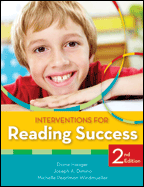Explore ways to differentiate instruction. For example: Partner two students reading at different levels in a reading fluency activity. Have them work at their own level, which will minimize behavior problems while prescribing the appropriate intervention work for each student. Reading is not a one-size-fits-all-model!
How one teacher introduced centers in her classroom
Morning:
When students enter the classroom, Ms. Shaw begins the day with one of the fluency activities. This focuses the entire class on beginning the day with a quick intervention activity (e.g., One Minute, Please!; Echo Reading).
Before recess:
The time between the start of school and recess is typically spent in a reading block. Structured intervention is usually part of this time unless it is scheduled for after recess or after lunchtime.
After recess:
Ms. Shaw usually conducts her math lessons after recess. When students are working independently on their follow-up assignment, she pulls a student or two aside for 5-10 minutes and gives them extra help in reading intervention.
After lunch:
Students come in from lunch and have sustained silent reading for about 10 minutes. Ms. Shaw pulls a few more students to conduct 10 minutes of reading intervention at this time. She typically works with the students who have difficulty reading alone, focusing on needed early reading intervention activities.
End of day and after school:
While the homework monitors are distributing the day’s homework assignment and students are readying themselves to go home, Ms. Shaw pulls a few students aside to read words from the word wall. Ms. Shaw has said that any spare minute is filled with reading intervention activities. There are a few students who always have permission to stay after school. Ms. Shaw gets those students and works on 10 more minutes of reading intervention.
(Originally published: April 2014)
